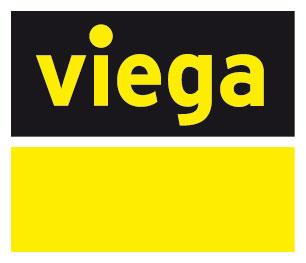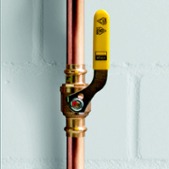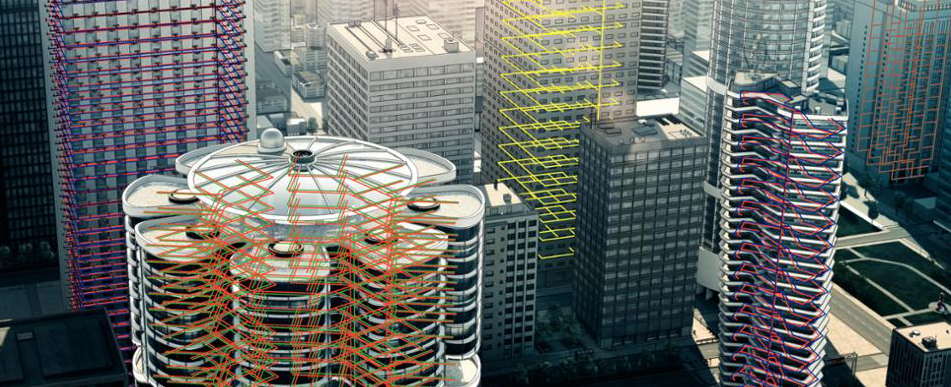For decades, hydronic piping has prevailed as a popular method of heating/cooling spaces in Europe. In fact, with the technology’s favorable comfort and economics, most Europeans have come to interact with hydronic piping systems on a daily basis, whether it’s within their homes or in commercial spaces.
In the U.S. market, the rise of hydronic piping has been a more gradual process. But with ongoing advancements in the field, the needle is starting to move faster. Homeowners and businesses alike, as well as those within the HVAC field, are increasingly recognizing what this innovative technology means for their projects—and they like the results they see.
Here’s a look at some of the developments driving the growing adoption of hydronic piping systems.
4 Factors Behind the Growth of Hydronic Piping
1. Improved Energy Efficiency
Outside of the increased comfort hydronic piping systems deliver, one of their biggest selling points is energy cost savings. Thermostats on these systems can be set a few degrees lower or higher, respectively, as hydronic piping warms and cools surfaces directly versus the forced-air route of warming/cooling the space.
While this has always been the foundation of how hydronic systems work, infrastructure advancements have given rise to more energy-efficient designs. Take the outdoor reset controller, for instance. By using the outdoor temperature to calculate the supply water temperature to the hydronic system, an outdoor reset controller can better align indoor temperatures with the outdoor environment and lower the system’s overall energy use.
2. Increased Control Over System Functions
Traditionally, HVAC systems have distributed heat and cool air evenly throughout a structure. This lack of flexibility, however, comes with some negative consequences. With a single thermostat controlling the space, the temperature that is applied to ensure comfort in heavy traffic areas will also be reflected in parts of the structure that are used minimally.
Thanks to the rise of zoning valves in hydronic systems, a space can have more than one temperature. Various zones (divided by either floors or individual rooms) can be established within a home or business, with digital thermostats synced up to each one. When adjustments are made to a single thermostat, only the temperature of the fluid in the specified zone will change.
3. Longer Equipment Life Cycles
When selecting the type of heating and cooling system to install, its average lifespan is an important consideration. In the case of hydronic piping systems, the results have been positive. Whereas variable refrigerant flow systems might need to be replaced after 10 to 15 years due to their continuous compressor use, hydronic systems have been shown to last anywhere between 20 to 25 years after installation.
Advancements in the design phase of hydronic piping systems will only help boost these statistics in the future. With sophisticated tools used to calculate elements like room-by-room heat loss and the flow rates in pipes, engineers behind the specifications of a hydronic piping project can optimize the design so it thrives within its environment, all while preventing issues like erosion that can disrupt the system’s lifespan.
4. Simplified Installation Processes
The installation of hydronic piping once required quite a bit of guesswork. For instance, it was up to the contractor to manually space out tubes to ensure even heating/cooling across the floor and avoid potential hot spots that can occur with the overcrowding of pipes. And with manual processes like these came the need for additional labor as well as longer installation times.
As newer technology has emerged on the market, the installation of hydronic systems has become an easier, more efficient process. The Viega Climate Mat, part of the Viega ProRadiant system, is one example. This pre-engineered design arrives on the jobsite completely assembled with spacer clips and strips that ensure equal heat distribution, and allows 20,000 square feet of hydronic tubing to be installed in the average workday.
Make Use of Radiant Systems in Your Projects
With the growing innovation behind radiant systems, industry leaders in the U.S. are not only taking more notice of the technology, but are actively incorporating radiant systems into their residential and commercial projects—a goal that Viega ProRadiant is helping them achieve.
Looking to find examples our radiant technology in action? Head over to our project profiles, where you’ll see Viega ProRadiant used in a variety of applications.









